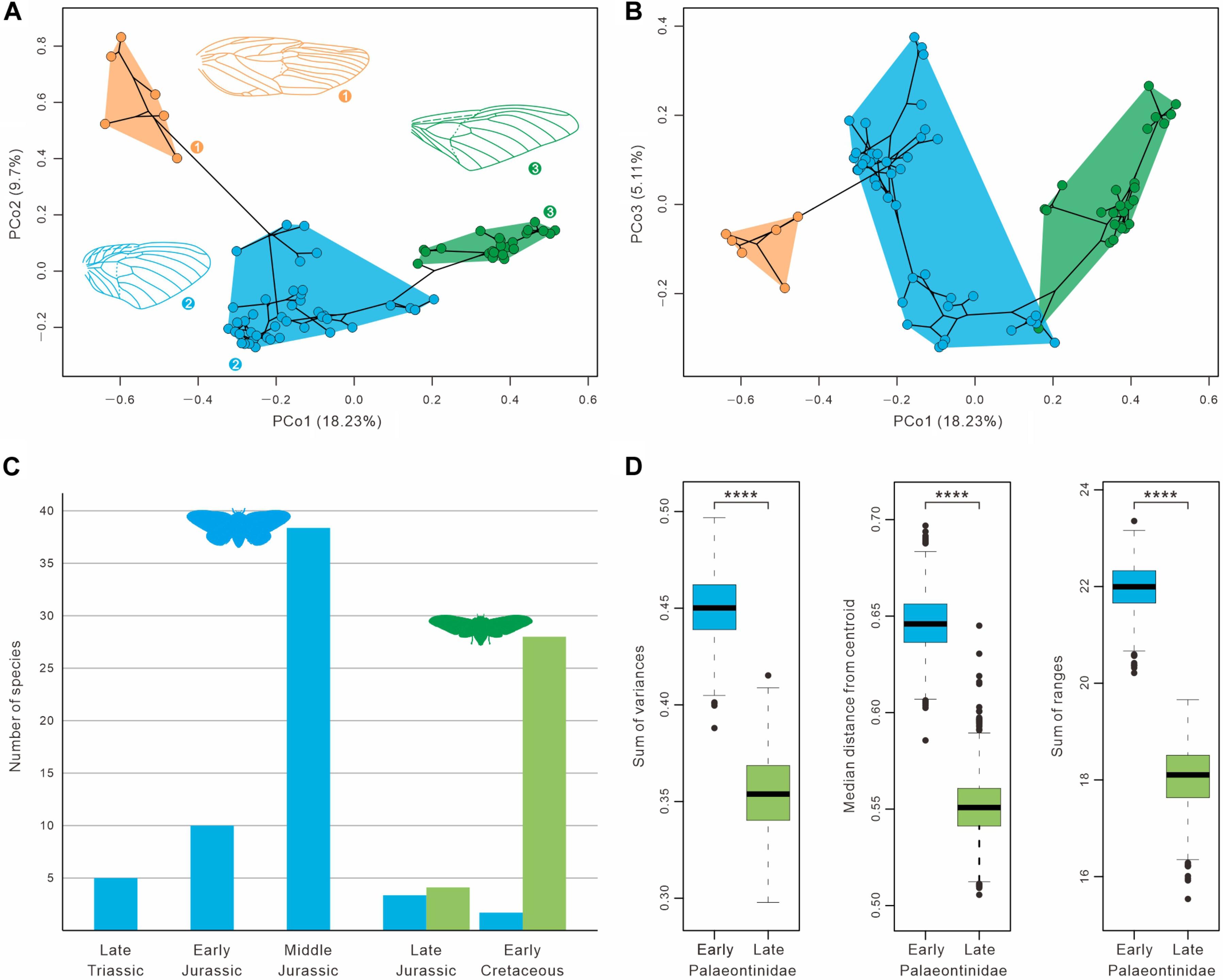中生代巨蝉的飞行性能增强和适应性进化
IF 11.7
1区 综合性期刊
Q1 MULTIDISCIPLINARY SCIENCES
引用次数: 0
摘要
昆虫进化出了多种多样的生态飞行行为和适应性,在其大规模进化模式中发挥了关键作用。然而,由于重建已灭绝昆虫的飞行能力极具挑战性,人们对其飞行性能的演化知之甚少。在这里,我们提出了一种综合方法来揭示中生代具有大型身体和翅膀的树栖昆虫支系--巨蝉科(Palaeontinidae)飞行性能的演化。我们的分析揭示了侏罗纪晚期至白垩纪早期古蝉科从早期到晚期的动物群更替,伴随着形态上的适应性转变和飞行能力的显著提高,包括飞行速度的提高和机动性的增强。古鸟类的适应性空气动力学进化可能受到了早期鸟类兴起的刺激,从而支持了古鸟类与鸟类之间空中进化军备竞赛(Air Race)的假说。我们的研究结果为捕食者诱导的形态和行为宏观进化提供了一个潜在的例子,有助于我们理解动力飞行是如何影响动物进化的。本文章由计算机程序翻译,如有差异,请以英文原文为准。

Enhanced flight performance and adaptive evolution of Mesozoic giant cicadas
Insects have evolved diverse ecological flight behaviors and adaptations that played a key role in their large-scale evolutionary patterns. However, the evolution of their flight performance is poorly understood because reconstructing flight abilities of extinct insects is highly challenging. Here, we propose an integrated approach to reveal the evolution of flight performance of Palaeontinidae (giant cicadas), a Mesozoic arboreal insect clade with large bodies and wings. Our analyses unveil a faunal turnover from early to late Palaeontinidae during the latest Jurassic–earliest Cretaceous, accompanied by a morphological adaptive shift and remarkable improvement in flight abilities including increased flight speed and enhanced maneuverability. The adaptive aerodynamic evolution of Palaeontinidae may have been stimulated by the rise of early birds, supporting the hypothesis of an aerial evolutionary arms race (Air Race) between Palaeontinidae and birds. Our results provide a potential example of predator-induced morphological and behavioral macroevolution and contribute to our understanding of how powered flight has shaped animal evolution.
求助全文
通过发布文献求助,成功后即可免费获取论文全文。
去求助
来源期刊

Science Advances
综合性期刊-综合性期刊
CiteScore
21.40
自引率
1.50%
发文量
1937
审稿时长
29 weeks
期刊介绍:
Science Advances, an open-access journal by AAAS, publishes impactful research in diverse scientific areas. It aims for fair, fast, and expert peer review, providing freely accessible research to readers. Led by distinguished scientists, the journal supports AAAS's mission by extending Science magazine's capacity to identify and promote significant advances. Evolving digital publishing technologies play a crucial role in advancing AAAS's global mission for science communication and benefitting humankind.
 求助内容:
求助内容: 应助结果提醒方式:
应助结果提醒方式:


